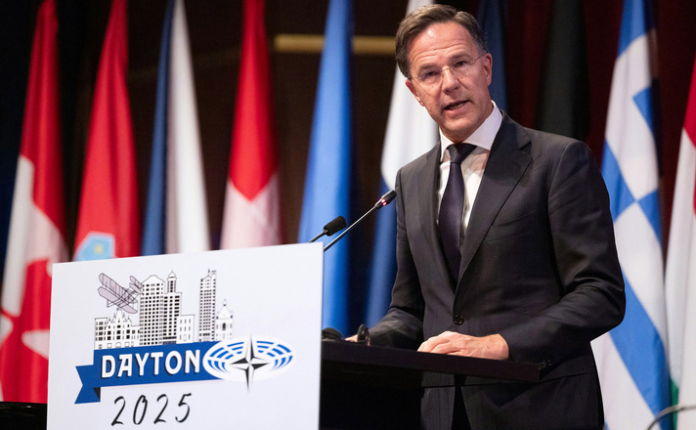NATO allies are edging closer to adopting a new defence spending benchmark of 5% of GDP, Secretary-General Mark Rutte announced on Monday during a Q&A session at the NATO Parliamentary Assembly in the United States, according to Politico.
The proposal follows sustained pressure from US President Donald Trump, who earlier this year warned allies to sharply increase military budgets or forfeit American security guarantees.
I assume that in The Hague we will agree on a higher defence spending target of in total 5 per cent.
Initially dismissed by many as political rhetoric, Trump’s demands have gained traction amid escalating tensions with Russia and heightened scrutiny of Europe’s military preparedness. The 5% target represents a significant leap from NATO’s existing goal of 2% of GDP set in 2014.
Dutch Prime Minister Dick Schoof revealed earlier this month that Rutte had privately urged NATO leaders to allocate 3.5% of GDP to “hard military spending” and an additional 1.5% to “related spending such as infrastructure, cybersecurity and other things” by 2031. Rutte’s latest remarks mark his first public endorsement of the combined 5% figure.
While specifics remain unclear, Rutte indicated that traditional military expenditure would need to rise “considerably north of 3 per cent,” with supplementary funds directed toward logistics and support infrastructure.
NATO’s most recent data shows 23 of its 32 members are on course to meet the 2% threshold by this summer, a stark increase from just three nations in 2014. However, none currently approach the proposed 5% target. Poland leads at approximately 4.7%, while Lithuania and Latvia have pledged to meet or exceed 5% within two years.
Rutte’s advocacy underscores NATO’s evolving priorities, though achieving consensus on the higher target may prove contentious among member states balancing fiscal constraints and defence needs.
